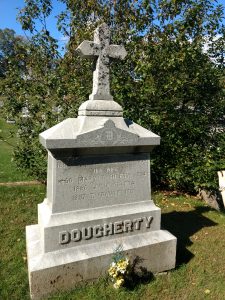When I first heard that my teachers had recommended me for COPLAC I felt very honored. I haven’t taken a lot of history courses yet because I’ve been focusing on my other major, so that I left a significant enough impression on my professors to be recommended felt very special.
My first month or two in COPLAC was extremely overwhelming. The sheer amount of different ways of communicating information was horrifying and confusing. Initially there was Zoom for class meetings, Emails, Slack, WordPress, Hypothesis for leaving comments, and Twitter. Aside from email, I had never used any of these other programs. To have to use and check all of these platforms on a regular basis was a huge amount of work, more than I felt I had signed on for. For at least a month I considered quitting because it was too overwhelming. Honestly the only thing that kept me in the class was because I was friends with my partner and didn’t want to let her down.
We eventually gave up Hypothesis. I only used Twitter two or three times because it was too much of a hassle and I could never remember to tweet. I also didn’t see the value in it. I also never used Slack much unless I received a direct message or was told to look at the class channel for resources, although I do see that it could be a valuable platform to use. Overall, I would suggest not using Hypothesis or Twitter. Neither of these things added anything of value to my experience in this class and made it more complicated than it needed to be.
After we started settling into the research portion of the class and the technology issues settled down, I felt much better. Forcing myself to use resources like the archivists, local history society, and public library, that I don’t usually use in research projects was very helpful to me. This class made me seek out new sources of information and become more comfortable using them. It really helped me to develop my researching skills.
It was interesting to work on this research project this semester because in another class I was also working on a local history research project. Many of the skills and tools that I was learning in one class could be used in the other. Research trips made for one class could also be used to dig up research for the other. My partner for COPLAC was also in this history class. We could shift between working on the different research projects and even use some of the same resources.
Being able to talk to other students from across the country was a really fun experience. I enjoyed getting to know students from other areas and hearing about their experiences and local histories. It was also fun to listen to Dr. Dunn and Dr. Turner debate the merits of barbeque. I’ve never had a class taught by two professors before, so this was another facet of the experience. They each brought different ideas, areas of expertise, and personalities to the class. It was sun getting to know both the professors and the students.
The most significant thing I took from this class was the research experience and the digital tools. While we were creating our blogs, we had to try out different digital tools and see what would work best; which ones were better for the story we were trying to tell, and which ones we could actually use with some degree of proficiency. We ended up using Timeline JS and Google My Maps. I had never used Timeline before, but found it to be a very useful program. Interestingly, my professor for my other research project required us to use Timeline, so my prior experience with it in COPLAC was very useful. I ended up having a lot of problems with it because it’s not the easiest program to use and can be very glitchy and sensitive. It does create a great timeline and I can see how you could use this tool to create very unique projects. Google My Maps was another cool tool that we used on our blog. I had never heard of it before, although I do use Google Maps a lot. It was a bit difficult because I had to teach myself to use it and then teach my partner, but once I got the hang of it I discovered how versatile it can be. It’s a great tool for a big project like this. I’m already using it for a personal project. My friends and I are studying abroad in Europe next semester, so we have been using it to chart out where we’re each going, where we can meet up, and places that we all want to go. This is an extremely helpful tool not only for academic purposes, but also for everyday life.
The start of my COPLAC experience was very rough. I experienced some miscommunication, confusion, and an extremely overwhelming amount of new technology that I was expected to use that I feel did not add to my experience. I really enjoyed the project as a whole, and learned a great deal about research and how to find local and online resources. This experience will be very useful to me in future. I also liked meeting people from other parts of the country and sharing in their research experiences and getting to know them. I learned how to use many different technologies and digital tools, some of which I will continue to use in future. Overall my experience with COPLAC has been one of positive interpersonal interactions, gained experiences in the field of local history and online research, and learning how to use a wide variety of digital tools with varying degrees of usefulness.




